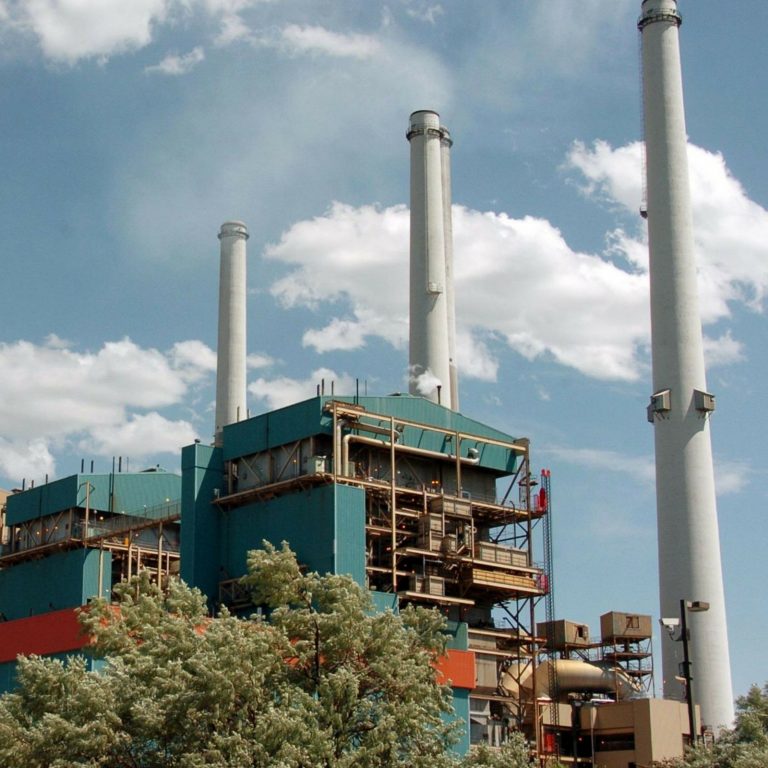
2021-3-10 18:31 |
North America’s bitcoin mining industry is changing the way we use energy. But where exactly are these operations drawing their power from?
In his introduction to Michael Saylor’s recent conference “Bitcoin For Corporations,” Ross Stevens, founder and CEO of Stone Ridge and NYDIG, spoke about the importance of energy to bitcoin, and how bitcoin mining will create new economic hubs in areas where stranded energy exists.
Until now, human settlements have been located near transportation hubs, he noted, not energy hubs. But the need for cheap, abundant energy like hydropower makes bitcoin mining a natural pioneer in those areas where industries like forestry and pulp and paper have exhausted resources and moved on, leaving energy infrastructure behind.
In “A Hitchhiker’s Guide To Bitcoin Mining In North America,” we attempted to sketch out the rough outlines of the emerging bitcoin mining ecosystem on the continent where much of this energy pioneering is and will be taking place. We listed mining pools, mining companies, financial services firms and firmware companies.
In this second part, Bitcoin Magazine is continuing this journey of discovery to shed more light on what this new mining ecosystem looks like and, more specifically, what sources of energy are available and being used.
But this is no easy task. In digital asset firm CoinShares’s report on bitcoin mining from December 2019, the researchers expressed the difficulty of trying to pin down an accurate picture of where miners work and what energy they’re using:
“...while we do our utmost to accurately pinpoint the location of global mining centres, the Bitcoin mining industry remains a highly private and secretive industry,” they wrote. “As a result, our estimates may be subject to significant potential uncertainty.”
The North American Energy LandscapeThere is a lot of anecdotal evidence that North America is experiencing a new gold rush as mining companies stake claims, form partnerships and order large inventories of the latest ASIC technology.
North America is a new mining mecca, primarily because there’s lots of cheap, “stranded” energy in the region, making it a new frontier for mining companies and investors, according to Marty Bent of Great American Mining and Harry Sudock of Griid, who discussed the matter on a recent podcast about mining and energy.
For example, British Columbia and Quebec, two of Canada’s largest economies, were built on resource extraction, mainly forestry and traditional mining. But many of the region’s lumber and pulp and paper mills powered by hydroelectric dams have moved on or closed, leaving power sources and infrastructure behind.
Areas of Washington State and Upper New York State have similar advantages — lots of cheap stranded energy from a time when manufacturing dominated the region and factories needed to be near power sources to be economical.
In light of the ongoing debate about the environmental impact of the energy that bitcoin miners use, it is helpful to know the terrain.
On this front, China presents a relatively clear picture — mostly hydropower in the rainy season and coal and natural gas in the dry season.
But many U.S. states have a mix of power sources on the local grid, often including coal, natural gas, nuclear and hydro power. This makes it difficult to pin down power sources used by individual companies.
But despite the difficulty of pinpointing precise energy allocations, it’s clear that this region is attracting a significant proportion of bitcoin mining operations, particularly from Asia.
“The migration of hash out of China over time by existing players is very, very rapid and they're very motivated,” said Bent on the recent podcast. “So, if you're operating on any of those hydro facilities in China, there's significant seasonality. You're already moving cash in between locations. And so they're incentivized to avoid those switching costs to migrate to regions where there is stable access to power.”
It’s the nature of bitcoin mining that miners “seek out extremely cheap sources of energy which tend to be stranded renewables or fossil fuels like natural gas and oil via flaring or venting that would otherwise be wasted,” added Bent.
And it’s not just Chinese miners that are looking for a new frontier. A growing interest in mining from institutions like investment funds is spurring growth in the U.S. and Canada as established investors look for areas with not only cheap, abundant energy but a degree of political and regulatory certainty.
Underscoring the types of uncertainty these investors hope to avoid in China, there are reports that China’s government will be regulating miners working in Inner Mongolia and Xinjiang in an attempt to curtail the use of coal.
https://twitter.com/nic__carter/status/1366381727866892288
This may help make North America a more attractive location for Chinese mining companies.
Shifting The Energy ParadigmCambridge University’s Centre for Alternative Finance is studying the use of energy in bitcoin mining and has developed its “Cambridge Bitcoin Electricity Consumption Index” to try and gauge the amount of power consumed by the bitcoin network, broken down by individual regions.
The center calls its results “an educated guess” due to the many variables, including location, that are still largely unknown. Researchers used aggregate data from three mining pools that are based in China — BTC.com, Poolin and ViaBTC — as samples for its projections.
The resulting “Bitcoin Mining Map” shows the average monthly hash rate (power usage) broken down by country. At the time of this writing, China leads the world at more than 65 percent of total energy use, while the U.S. contributes 7.24 percent and Canada 0.82 percent.
The Cambridge Centre is also studying the kind of energy used in different parts of the Bitcoin network. In a September 2020 report, it found that 76 percent of surveyed mining operations used renewable energy as part of their energy mix. Hydroelectric power was found to be the most used source of energy, with 62 percent of respondents indicating that this source powered their mining operations.
Coal was the next-most-used energy source, with 38 percent of respondents indicating that it powered their operations, and natural gas came in third with 36 percent of respondents indicating that it powered their operations.
CoinShares has also studied the use of energy on the network and has estimated how much energy use is derived from renewables. It noted the mining industry is “notoriously opaque” making it difficult to analyze with certainty.
In its December 2019 report, it pegged the use of renewables at 73 percent, making bitcoin mining one of the cleanest industries in the world:
“...we calculate an estimate of the renewables penetration in the energy mix powering the Bitcoin mining network at 73 percent, making Bitcoin mining more renewables-driven than almost every other large-scale industry in the world,” according to the report.
The future development of bitcoin mining in North America is the future development of stranded energy.
In his remarks at “Bitcoin For Corporations,” Stevens called bitcoin the “most profitable use of energy in human history that doesn’t need to be located near human settlements,” saying that bitcoin will change the economics of energy.
Though the exact energy sources are difficult to parse, it’s clear that the story of bitcoin mining in North America is the story of bitcoin finding this game-changing economic use case for the energy industry. As Austin Storms, the director of product and engineering for Great American Mining put it on Twitter recently, this is a paradigm shift on par with the advent of the internet itself.
https://twitter.com/austorms/status/1366023459625648132
Appendix: Bitcoin Mining Companies in North AmericaBelow is a partial list of Bitcoin mining companies based in North America, along with their specific regions of operation:
CanadaAlberta:
Hut 8 MiningDrumhellerMedicine HatUpstream DataCalgaryBritish Columbia:
DMG Blockchain Solutions Christina LakeIris EnergyCanal FlatsMaaS BlockchainLower Mainland Ocean Falls BlockchainOcean FallsQuebec:
BitFarms Brossard CowansvilleFarnhamMagogSherbrookeSt. HyacintheBlockstream Mining Montreal HIVE Blockchain TechnologiesLachuteU.S.California:
Plouton MiningMojaveColorado:
Frontier MiningGeorgia:
BlockcapBlockstream MiningAdelCore ScientificIdaho:
XTRA BitcoinFruitlandIllinois:
Blockware SolutionsChicagoIowa:
Vortex Blockchain TechnologiesDes MoinesKentucky:
BlockcapCore ScientificMaine:
Northern Data SystemsFalmouthMinnesota:
Compute NorthEden PrairieMontana:
Marathon Patent GroupBig HornNebraska:
Barefoot MiningOmahaCompute NorthKearneyNew York State:
Coinmint MassenaGreenidge GenerationDresdenNorth Carolina:
Core Scientific MarbleNorth Dakota:
Crusoe Energy SystemsBakken Oil FieldsEquinorBakken Oil FieldsMarathon Patent GroupOhio:
Bit5iveOklahoma:
Riot BlockchainOklahoma CityPennsylvania:
Bit5iveSouth Carolina:
Treis MiningGreerSouth Dakota:
Barefoot MiningNorth Sioux CityBitMOR MiningCantonCompute NorthSioux CityTexas:
BitmainRockdaleCompute North Big Spring Layer1WhinstoneRockdaleUtah:
Orem MiningVirginia:
BitFrontierFredericksburgWashington State:
Bitmain MiningElite MiningSCATE VenturesSolunaWest Virginia:
BOTSWyoming:
Wyoming MiningAfton origin »Bitcoin (BTC) íà Currencies.ru
|
|















